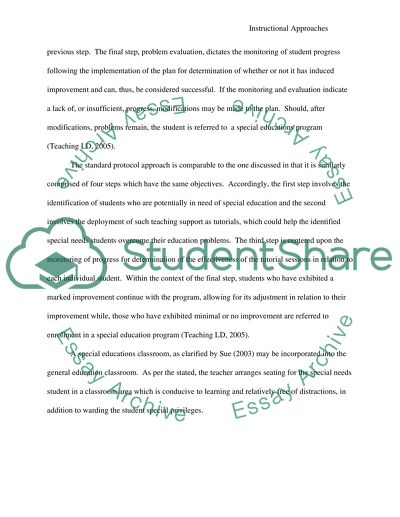Facilitating the Educational Approaches to Students with Special Needs Essay. Retrieved from https://studentshare.org/education/1524487-instructional-approaches-essay
Facilitating the Educational Approaches to Students With Special Needs Essay. https://studentshare.org/education/1524487-instructional-approaches-essay.


